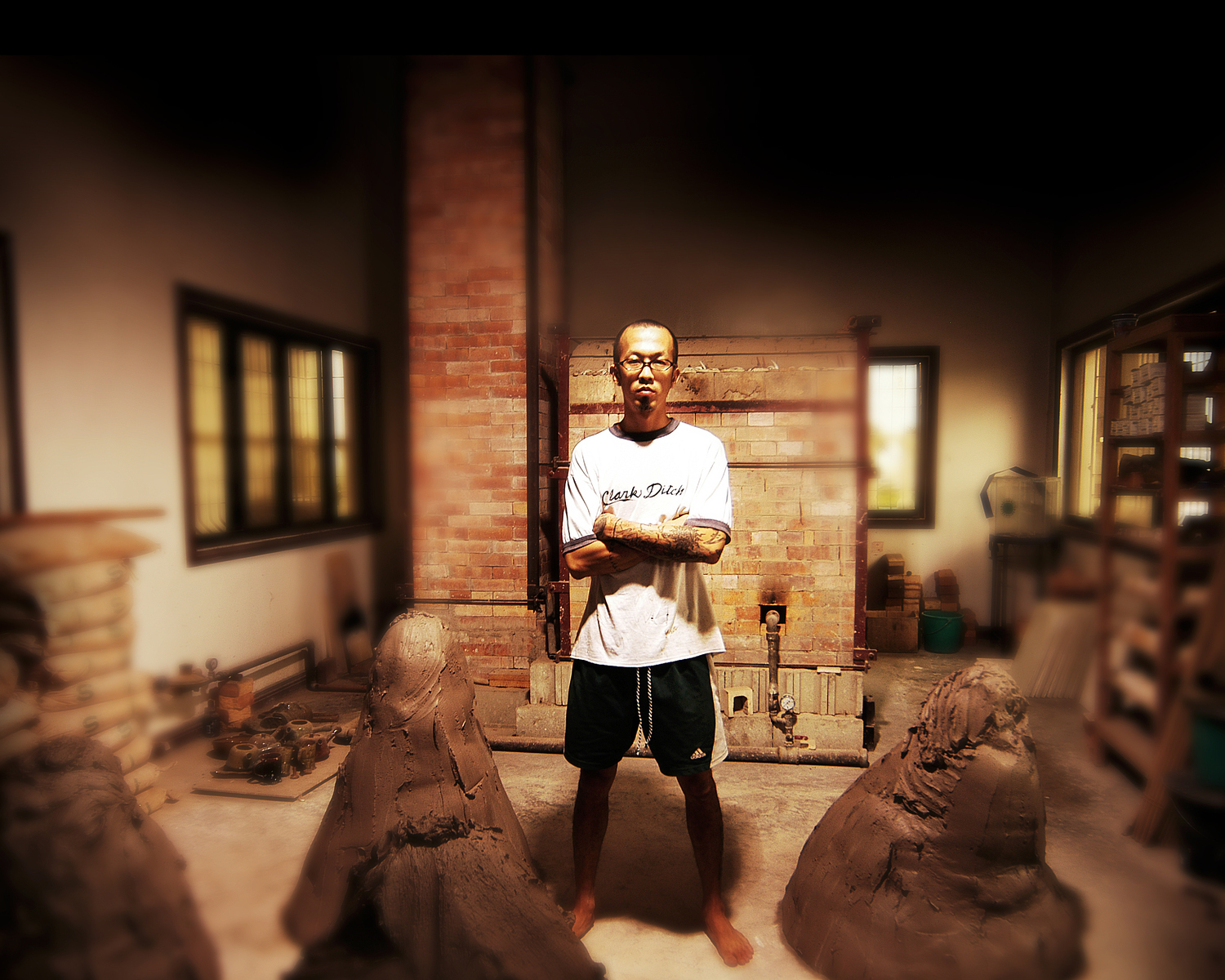Myanmar (Burma)
Burma is a model Southeast Asian - type-site for modern cottage industry producing folk pottery. Reliance on pottery in daily life is paramount as substitute materials, such as plastic and aluminum, are not readily available.
At Sagaing, south of Mandalay, most of the female population of the village is involved in the production of pottery for local use. The primitive method of hand building a vessel using a paddle and anvil is still used extensively in Burma today. The village specializes in making one shape-a medium-sized earthenware container for drinking water. Many of the patters are elderly women who are not strong enough to work in the fields but, unfortunately, the younger generations do not seem to be interested in learning the craft of making hand-built pottery.
Shwe-Nyein, northwest of Mandalay on the Irrawaddy River, is another village where pottery is the main occupation. Utilitarian glazed jars and bowls of various sizes are the main products. The output is extensive and the potters are traditional as well as innovative. Shapes included ancient styles and new one, resulting from experimentation with clays and glazes. The clay is indigenous but the glaze materials are imported from the Shan state. Two other pottery centers, Keng Tuung and Mong Tung, are located in the Shan state.
Southern Burma abounds with pottery centers, probably because of the availability of raw materials. Small pottery villages are Papun and Tavoy, and Bassein in the Karen state. The largest center of pottery production in the area is Twante, southeast of Rangoon, where both glazed and unglazed wares are made. Some pieces are hand built and others are thrown on a potter's wheel. Primary glazed products included jars, flowerpots, and small bowls and unglazed jars, pots, and bottles.

![10[1].jpg](https://images.squarespace-cdn.com/content/v1/532744c3e4b051c9f1ed3284/1395887222828-9ACOU6CYSCVFMMN8YLHQ/10%5B1%5D.jpg)
![1990944590[1].jpg](https://images.squarespace-cdn.com/content/v1/532744c3e4b051c9f1ed3284/1395887240253-02MVO38FQZB7ZXL79ILD/1990944590%5B1%5D.jpg)
![2081286274[1].jpg](https://images.squarespace-cdn.com/content/v1/532744c3e4b051c9f1ed3284/1395887245146-EE8V40ALPJK54IS8GKOT/2081286274%5B1%5D.jpg)
![2916726043[1].jpg](https://images.squarespace-cdn.com/content/v1/532744c3e4b051c9f1ed3284/1395887254168-D0NGRV8M6YDROZBQMYPX/2916726043%5B1%5D.jpg)
![3035176784[1].jpg](https://images.squarespace-cdn.com/content/v1/532744c3e4b051c9f1ed3284/1395887266790-7IEFQ9BPZVIHWO2KVA6X/3035176784%5B1%5D.jpg)
![2916726043[1].jpg](https://images.squarespace-cdn.com/content/v1/532744c3e4b051c9f1ed3284/1395887291841-N825CC10SUQ1NXXG5I58/2916726043%5B1%5D.jpg)
![3817181987[1].jpg](https://images.squarespace-cdn.com/content/v1/532744c3e4b051c9f1ed3284/1395887300298-BJUSTIEY3Y596HPX6XFK/3817181987%5B1%5D.jpg)
![AS06_KSU0025_M~Girl-with-Pottery-Jars-Myanmar-Posters[1].jpg](https://images.squarespace-cdn.com/content/v1/532744c3e4b051c9f1ed3284/1395887313503-2EAAIUFG3X0P77EY8WHL/AS06_KSU0025_M%7EGirl-with-Pottery-Jars-Myanmar-Posters%5B1%5D.jpg)
![catphoto[1].jpg](https://images.squarespace-cdn.com/content/v1/532744c3e4b051c9f1ed3284/1395887319554-3UFA1EBFS4OTLV9LDMIR/catphoto%5B1%5D.jpg)